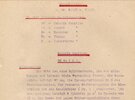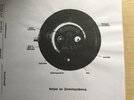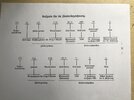We al know the abbreviation SC for the Geman "Minenbombe", like the SC50, SC250, etc.
The German manual L.Dv. 4200 and other German manuals I know give no explanation what SC means.
Mostly find on internet and non German manuals is Sprengbombe Cylindrisch or Sprengcylindrische, but the German word for Cylindrisch = Zylindrisch, so a "Z" instead of a "C".
The "C" is also used in the nomenclature of other German bombs like: PC, ZC, BLC, KC, NC, Brand C, etc. But also no explanation for the "C".
Why is the the "C used instead of the Z?
The German manual L.Dv. 4200 and other German manuals I know give no explanation what SC means.
Mostly find on internet and non German manuals is Sprengbombe Cylindrisch or Sprengcylindrische, but the German word for Cylindrisch = Zylindrisch, so a "Z" instead of a "C".
The "C" is also used in the nomenclature of other German bombs like: PC, ZC, BLC, KC, NC, Brand C, etc. But also no explanation for the "C".
Why is the the "C used instead of the Z?



